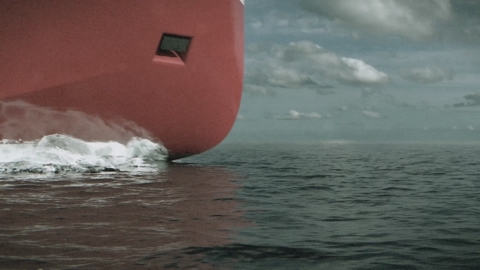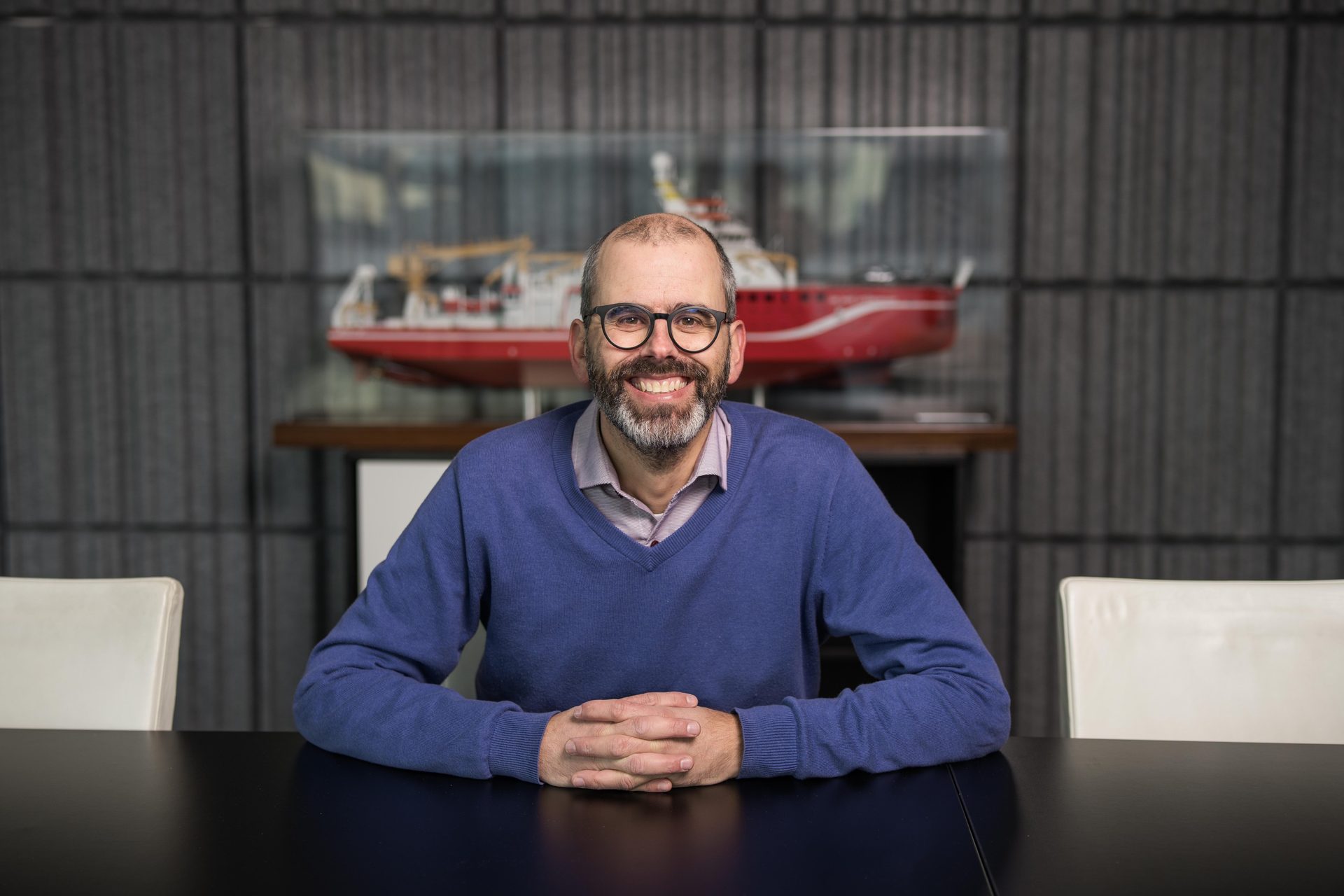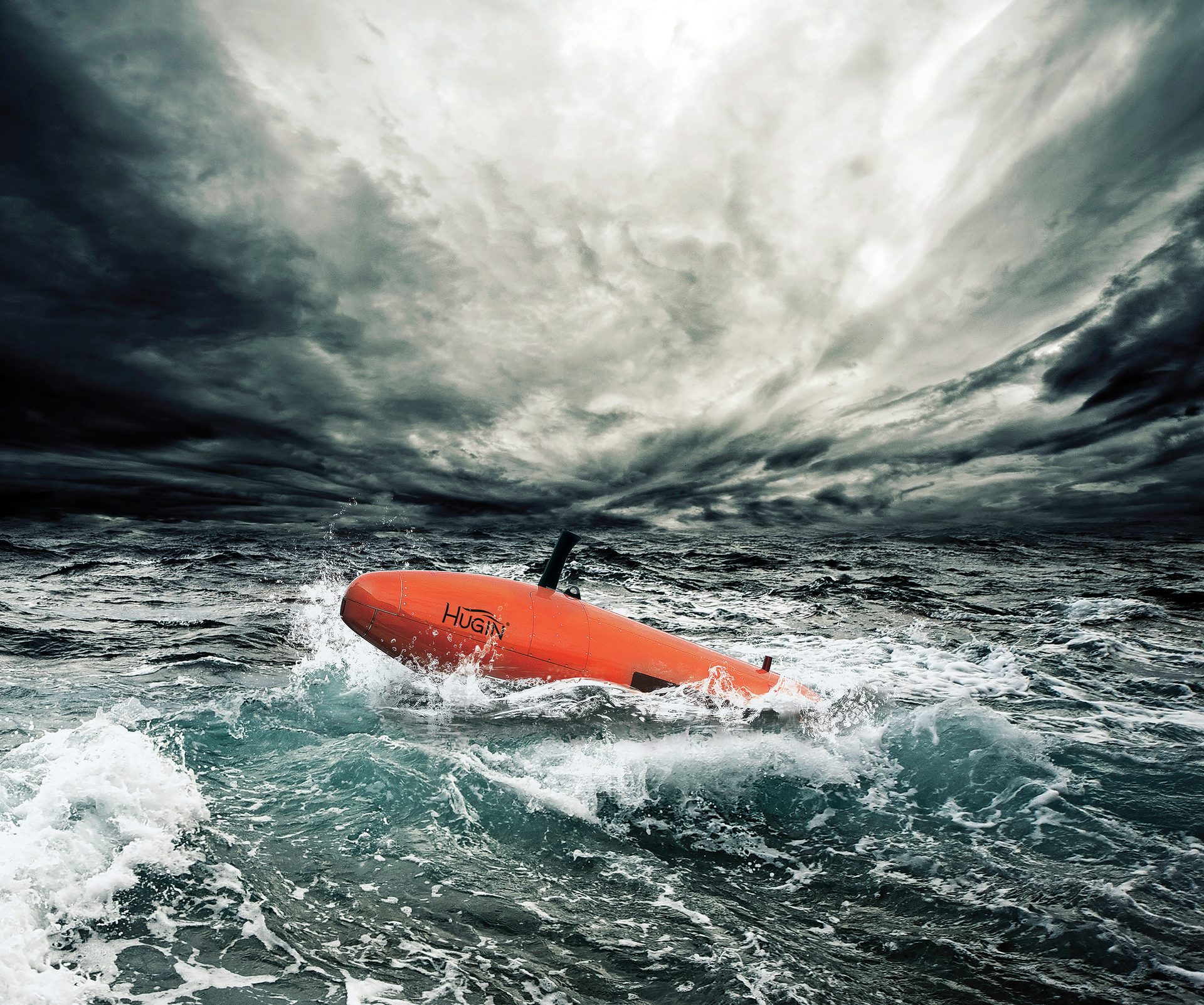
And it is probably the most advanced ship in the world.
The Polar Ship
Sir David Attenborough withstands extreme conditions.
It takes scientists and supplies to Arctic regions.

And it is probably
the most advanced ship in the world.
It takes scientists and supplies to Arctic regions.
The Polar Ship
Sir David Attenborough withstands extreme conditions.
"This is a complex ship where logistics and research must work together. Preparing the design and documents for the design competition took half a year. How can equipment be stored without getting in the way? How can all 11 laboratories be on board to meet the needs of the various scientists? How can the propellers and exhaust avoid disrupting research experiments? We met the requirement for a quiet vessel the first time we tested it," says Leenders.
The ship complies with the Polar code, which imposes extra-high design standards due to extreme conditions and the vulnerability of nature in polar areas, which significantly affects the organization on board and requires a lot of extra equipment.

Erik Leenders, senior ship designer at Kongsberg Maritime, was given the task of designing the British polar ship Sir David Attenborough. A ship that should glide almost silently through the water, be able to break the ice and collect samples from 9,000 meters deep. The boat has garnered attention worldwide, and it's no wonder. Sir David Attenborough is five ships in one: A research vessel, an icebreaker, and a "passenger ship" with space for 60 scientists, a cargo ship that transports everything from containers to ping pong tables, and a tanker for diesel and jet fuel to the bases in Antarctica.
"The chance to design a ship like this once in a lifetime is minimal."
The Icebreaker
Journalist: Tina Aasen
Photo/video: Cecilie Hatløy, British Antarctic Survey, Kongsberg Gruppen
Illustration: Seloloving

Senior ship designer Erik Leenders led the challenging work on Sir David Attenborough, a ship with many tasks.
Erik Leenders
"We met the requirement for a quiet vessel the first time we tested it."

Many ships are still operating, including three polar ships, Norway's Kronprins Haakon, and other research vessels. Kongsberg Maritime is also a world leader in green shipping and plays a central role in reducing the carbon footprint at sea. Carbon-neutral fuels alone will not be enough; maritime businesses need technological solutions. Kongsberg Maritime has equipment on board every third ship in the world.
Learn more about Kongsberg Maritime and ship design
The ship designers learned a lot from the process with the polar ship "Kronprins Haakon," which was christened in 2018.
Offshore boats, cargo ships, passenger ships, research ships—Kongsberg Maritime can boast 50 years of ship design experience and 1,000 ship designs, which enables the team to create a vessel like Sir David Attenborough.
The adventure began with the shipyard group Ulstein Group in Ulsteinvik, Møre og Romsdal. In 1974, the shipyard established a new industry standard for offshore vessels, contributing to Norway's oil wealth. The ship technology part of Ulstein Group was sold to British Rolls-Royce in 1999 and became a part of Kongsberg Maritime in 2019.

The nearly silent ship can plough through ice 1 meter thick with 20 cm of snow on top at 3 knots. A model was tested in a pool in Hamburg to see if it could turn in the ice. Using underwater cameras, they studied how the ice broke below the surface. Erik Leenders was excited when it was finally set to embark on its maiden voyage down the River Mersey at Birkenhead in the UK.
“We had to balance all the requirements and solutions. There were many discussions as we put this large 3D puzzle together. When you finally see several thousand tons of steel gliding into the river, moving faster and faster until it’s carried away by the current – that gives you goosebumps,” Leenders says.
A 3D Puzzle Like No Other
The first ship was delivered in 1974 and set the standard for offshore vessels. "M/S Far Scotsman" was one of the earliest vessels Kongsberg designed. It was launched in 1975.
Archive photo: Kongsberg Maritime.




The British Natural Environment Research Council held a public vote on the polar ship's name. A British DJ suggested Boaty McBoatface, which, of course, ended up winning. The name was scrapped in favour of Sir David Attenborough the year before the environmentalist and TV personality turned 90. An underwater drone on board took over the Boaty McBoatface name as a consolation.
For Kongsberg Maritime, the expertise that has gone into both design and equipment makes Sir David Attenborough a unique ship. It withstands extreme temperatures, from heat to cold, and performs at its best in the world's roughest waters. The ship sails between the UK, the Falkland Islands, Antarctica, and north to the Arctic, the most weather-beaten areas in the world.
"A good icebreaker is usually not the best ship for handling high seas, but we did quite well. The captain and crew were involved in the process and were satisfied with how the ship behaved," says Erik Leenders.
Boaty McBoatface

Sensors under the ship can, for example, study krill swarms. One of the challenges for the ship designers was to ensure that the ice did not damage the sensors. All equipment must work at all times.
"Scientists from around the world who are on expeditions may have waited years to get a spot, and you don't want the trip to be in vain because a pump isn't working," says Leenders.
The ship is in operation year-round for climate research and other studies, supplying British polar bases in Antarctica and some islands in the Atlantic. Kongsberg Maritime has provided most of the equipment on board. Continuous water samples are taken from surface water and pumped into the ship and to all the laboratories. Scientists also take regular air quality samples. The data is compiled with data from all other ships doing the same, giving us a comprehensive picture of air and water quality around the globe.
Scientists from all over the world

Sensors under the ship can, for example, study krill swarms. One of the challenges for the ship designers was to ensure that the ice did not damage the sensors. All equipment must work at all times.
The ship is in operation year-round for climate research and other studies, supplying British polar bases in Antarctica and some islands in the Atlantic. Kongsberg Maritime has provided most of the equipment on board. Continuous water samples are taken from surface water and pumped into the ship and to all the laboratories.
Scientists also take regular air quality samples. The data is compiled with data from all other ships doing the same, giving us a comprehensive picture of air and water quality around the globe.
Scientists from all over the world

The researchers also used a 45-meter-long tube with a weight at the top weighing around 9 tons, which was dropped hard and bored into the seabed. When the tube is retrieved, it is cut into pieces to study the collected soil samples. The researchers also have drills that can bore into hard rock underwater.
Is this the most advanced ship in the world?
"I like to say it is. You'll find larger and more powerful polar ships, but none have as many different tasks and facilities as Sir David Attenborough," says Leenders.
"Scientists from around the world who are on expeditions may have waited years to get a spot, and you don't want the trip to be in vain because a pump isn't working," says Leenders.
Much of the sampling occurs far below the surface, and the winches are crucial here.


Tonnage:
15 000
Length:
128 m
Beam:
24 m


The British polar ship Sir David Attenborough was on its first test voyage in 2020 and has now completed its third season.
The project involved the hydrodynamics, mechanical, interior, structural, and electrical departments, as well as a number of subcontractors.
In addition to designing the ship, Kongsberg Maritime has also supplied engines, propeller systems, thrusters, gear systems, deck machinery, and winches.
The ship is 130 meters long with a reinforced hull to withstand ice and harsh climates.
It cost 2.4 billion NOK and was built at the Cammell Laird shipyard in Birkenhead near Liverpool.
Sir David Attenborough
More stories from Kongsberg Gruppen
HISTORIE

110-year-old,
state-of-the-art research vessel

Taking a deep dive to find important answers

Small and splendid



